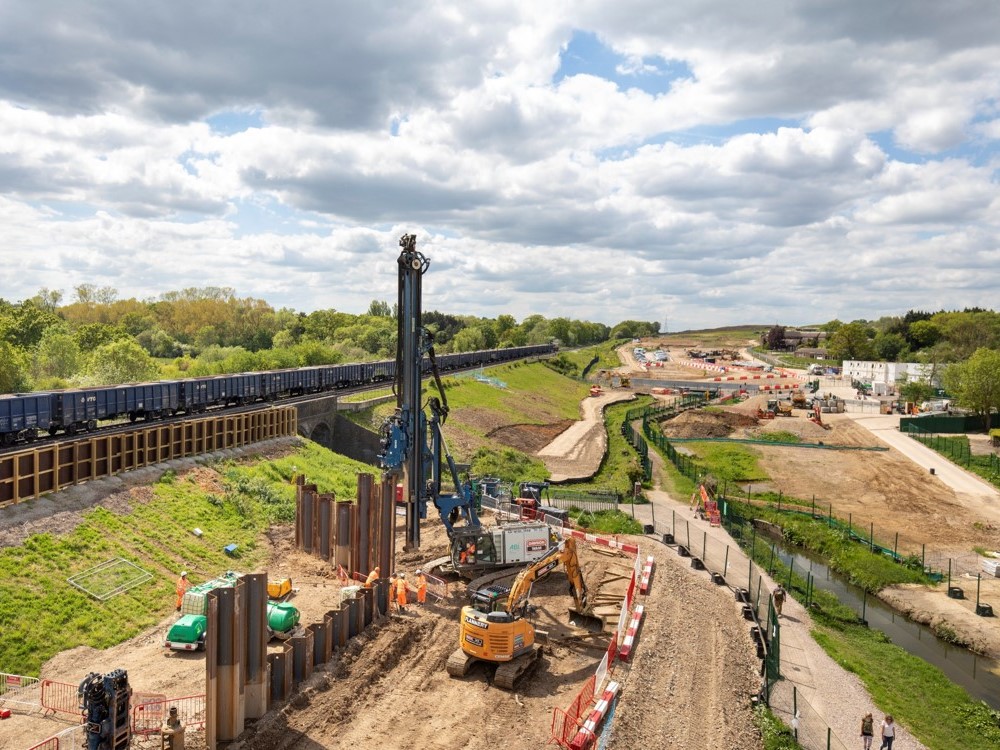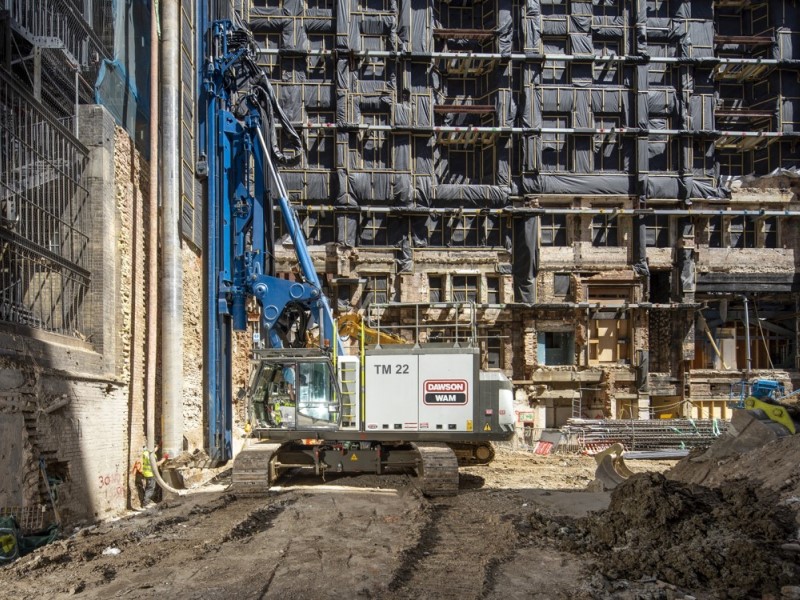Northern Ireland: Bridge Street WWPS, Strabane
PROJECT DETAILS
CLIENT:
Northern Ireland Water
DESIGN ENGINEER:
RPS
MAIN CONTRACTOR:
Dawson WAM
LOCATION:
Bridge Street, Strabane
Strabane town is built on a floodplain of the Mourne River, and is protected via flood walls which were constructed in 1989, along with levee banks. Dawson WAM were appointed the Principal Contractor to undertake the construction of a new Waste Water Pumping Station adjacent to the flood walls, and the decommissioning of the existing station in Bridge Street, Strabane in 2017. With the Q100 Mourne River level approximately 3 metres above ground level, and the site adjacent to the Mourne River; Dawson WAM considered specialist construction methodology to cope with difficult conditions, specifically dewatering.
The scheme involved the design and build of:
• 12.5m diameter wet well and storage tank.
• Combined Sewer Overflow CSO (screened).
• Storm Pumping Station.
• High level discharge chamber.
• Diversion of incoming flows ranging from 200mm to 1.2m in diameter.
• Installation of a new pumping main.
• Decommissioning and removal of the existing pumping station.
• New site fencing, concrete hard standing and EMS area.
The ever-present high water table combined with Fluvial Glacial ground conditions when constructing the deep structures provided many engineering challenges. The main pumping station structure was a precast concrete segmental shaft 12.5 metre in diameter, 7 metres deep. The formation level of the shaft was below the river bed of the Mourne River and 4 metres below the water level strike in the boreholes. In a dry spell of weather when constructing the shaft, seven high head submersible pumps were mobilised to deal with the ground water, pumping a total of 341 l/s. Managing this water correctly in accordance with NIEA regulations was crucial, paying respect to both the guidelines, and the requirements of the local Fishery Agency. The installation of settlement skips and settlement lagoons along with daily Quality Assurance water samples, ensured that all silt was removed prior to discharging into the Mourne River.
Early in the construction programme, we utilised our piling expertise to install a sheet pile cofferdam to act as temporary works to accommodate a deep excavation for a storm wet well. This aided the excavation works for the construction of underground structures, and provide a water cut-off allowing the works to progress with a reduced requirement for dewatering. Four 450mm diameter perforated steel casings were also installed via our Cased CFA quick docking system, around the perimeter of the shaft, to below the formation of the structure. Submersible pumps were installed into these casings to relieve the water pressure. A ‘Zone of Construction Influence’ study was completed with the site information to determine the potential effects the extensive dewatering could have; with the study indicating it would have negligible effect to the surrounding buildings, structures and adjacent flood wall.
A 10m deep discharge chamber was installed on the site, with a discharge level higher than that of the Strabane Flood wall. This would allow, in storm conditions, the screened flows to be pumped to this high level, and discharge via gravity into the Mourne River. To combat tidal, surcharged sewers, there were three new tidal valves installed ranging in size from 450mm to 1200mm diameter.



